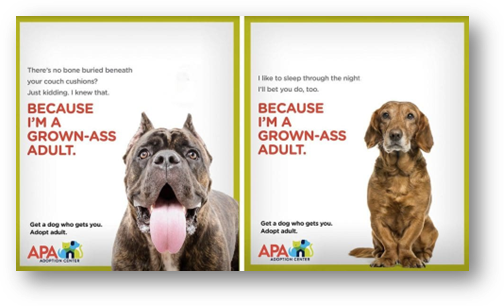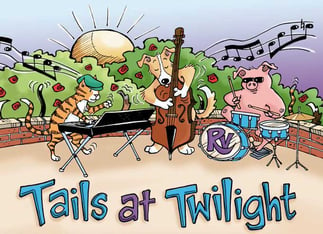.png)
Moves management sounds like it refers to the macarena or the twist, but it refers to the process of categorizing your donors based on the donor journey or cycle, and what your nonprofit can do to move them from “Hey, I’m interested” to “I’ll donate a major gift and you’re in my will!”
Once you understand the steps a donor takes to get through that journey and apply a moves management process, you can personalize your messaging and use strategic outreach (or moves) to get big fundraising results.
Every nonprofit has donors and prospective donors who feel passionately about the same mission. Often, these people are more than willing to support efforts to help that mission.
Moves management isn’t about swindling people or wheeling and dealing to squeeze money out of them. Rather, it’s about looking at a cohort of donors and communicating the immense additional good that can be done with a little more. It’s about offering opportunities to your donors, backed by a plan for how their donation will help. Your goal is to communicate your story and your mission in a way that lets people realize how much they care about this cause.
In this article, we will look at what moves management is, identify the stages in moves management, discuss the moves your nonprofit can take to connect with your donors at every stage, and share what you can learn from measuring the right metrics.
What is Moves Management?
There are some universal truths about your donors.
- At some point, they learned about your nonprofit.
- They began investigating your organization or comparing you to similar organizations. In short, they were shopping.
- Something triggered them to convert or make a donation.
After you have the donation, there are two more steps to this journey:
- You want them to donate again, so you must retain them.
- You want them to feel passionate about your nonprofit and discuss it with their friends.
In a nutshell, each of those stages can be influenced by actions your nonprofit takes to engage with the donor.
Moves management is defined as the process by which a prospective donor moves through that journey, and the moves/tasks an organization takes to bring in donors, establish relationships, and retain donors.
Moves management is most often associated with identifying and nurturing major donors. The principles, though, are applicable to all groups of donors.
The moves your nonprofit makes must be carefully thought out and strategic. The better your moves management is, the more engaged your donors will be, the higher your donor retention rates will be, and the more effective your fundraising will be.
When we talk granularly about moves management, we are referring to the process of segmenting your audience (easily done with a nonprofit CRM), deciding what activities will move each segment forward, and measuring those results to refine them and enhance their effectiveness.
Stages of Moves Management
There’s been a lot written about the donor journey and donor journey maps, and understanding the steps a person takes to do anything – join a club, buy a car, or donate to your nonprofit – can give smart marketers the chance to figure out how to engage them at each stage.
When we talk about moves management, we have stages that are somewhat different from the donor journey. Rather than focusing on what the donor does, we focus on the actions a nonprofit can take.

Awareness
Awareness isn’t always included in the traditional stages, but it’s so important to consider where your donors are first becoming aware of your organization. Events? Social media? How are you engaging prospective donors? Think about your story and who will care about it, and then consider how to reach them.
For example, if your mission is to save a local landmark, an onsite event with the intention of welcoming new supporters, telling the story of the landmark and why it’s important, and even handing out branded swag would be the moves your nonprofit can make. What are you not doing? Asking for a donation...yet.
What if your mission isn’t local? There are many avenues you can use to boost awareness:
- A social media campaign. When filled with arresting imagery, heartwarming stories, or even humor, social media campaigns are effective ways to generate awareness. Rover reported on a marketing campaign that created a lot of buzz. The intent of the campaign, launched by the Animal Protective Associate of Missouri, was to encourage people to adopt older dogs.

It’s hard to keep scrolling when you see ads in a campaign like this one...and that’s exactly the point.
- Direct mail can work well for awareness, and you aren’t limited by opt-ins.
- We mentioned events, and they can be effective even if your cause isn’t local. You can plan coffee dates in different cities and have ambassadors, which can be donors or board members, meet people for a cup of coffee or a walk.
- Once you have someone’s interest, send them to your website. Ideally, your website offers all the information they need to engage. This can look like a donation, or even signing up for an email newsletter, volunteering for an event, or giving their personal information to you in some way.
What can you measure in this stage? Think of this stage as building a database. You want as many names in the database as you can get, because they’ve all opted to hear from you. So track newsletter signups, registrations, social media clicks and other forms of engagement.
Awareness is where every donor begins. It’s worth focus and creativity to get your name out there.
Identification
In this step, you will want to get to know your donors. A robust nonprofit CRM can make this easy!
Segment your donors according to giving habits: one-time donors, monthly sustainers, major gift prospects, lapsed donors, etc. Segment them according to giving amounts. Segment them in as detailed a way as you can, because you are going to be able to personalize the messaging to a greater detail if you have specific characteristics of a group.
A caveat: if your donor information is not good, if your technology is not accurate or has messy data, this step won’t be helpful.
After you segment your audience, take a look at which group has the greatest potential to impact your fundraising. Is it those major gift prospects? Or the one-time donors? Start by focusing on one group and one moves effort at a time.
Identify a new group of supporters you would like to engage.
Once you have all your groups segmented and you’ve chosen the top group (or groups), begin to consider what moves would be applicable to each of them. Consider their demographics: Are they local? Concentrated in one geographic area? What age are they? You will reach Boomers differently than Millennials!
What can you measure at this stage? Measure where your fundraising is and set goals for each campaign. If, for example, your goal is to get one segmented list to increase monthly donations by $10, you can calculate and set that goal.
Part of a moves campaign is usually major gifts. This is why a private school, let’s say, would have a capital campaign to renovate. They know they need to raise a million dollars. They would break down that million into an average amount most families would donate, any events they had planned, and how many major gifts and at what amount would be needed.
You might not be looking for major gifts yet, but you do want to set a lofty but achievable goal. Then you’ll be able to back into your lists and consider the moves that will be effective.
And you’re still not asking for a donation.
Qualification
You will want to qualify every segmented group. While you already know a lot about them because you built the lists, you want to understand who they are and what their giving capacity is. What triggers them to donate? Are there reasons they support you, such as a family member with a disease you’re working to cure?
It’s recommended that you look at giving history, giving frequency, volunteer data, event attendance data, engagement with emails or texts or social media, and generally decide how engaged they are. We offer a free RFM calculator to quantify the recency, frequency, and monetary value of donors.

CharityEngine partners with Wealth Engine to identify prospective donors. You can also look at large donors to similar campaigns or nonprofits.
If one segmented list is regular donors who donate less than $50 a month, what moves could get them to $60 a month? Perhaps every qualified donor gets a delivery of swag or an invitation to a webinar with your executive director.
What can you measure at this stage? We had you set your goal, now set your baseline. What are the fundraising, volunteering, registration numbers for your groups? Measure what it is you intend to improve with your campaign.
Cultivation
So now you ask for money, right? Nope.
Cultivation is the stage at which you focus on building the relationship with the donors in your segmented group. This is where the rubber hits the road: whatever moves you’ve identified and implemented will happen at this point.
Think of this stage as an opportunity for your donors to learn more about your mission and your nonprofit, as you learn more about their behaviors and obstacles. Ask a lot of questions, which will help inform donor personas and help you hone your moves campaigns.
You know a lot about your groups now, so find a way to get in front of them. Maybe it’s a Zoom call for a coffee break. Maybe it’s an email campaign. Maybe it’s an event. Offer donors or potential donors something beneficial in exchange for learning about your mission and how their support can help.
Engaging at this stage can include event volunteers or volunteers at your headquarters. It can be a survey you send. It can be a day during which your team makes phone calls to a list of donors. Use a tool like Vidyard to create videos that let recipients put a face with a name.
The most important part of cultivation is personalization. Count on your CRM to autofill names on emails or give you phone numbers to call or text. But you can also handwrite a note on direct mail or send specific donors a report or website you thought they might like.
What can you measure at this stage? Count on your CRM for measurements now. Measure conversions, or engagement. How many times were your emails opened, your videos viewed, your social media posts clicked on? Website views, donation page views, or any way in which your audience engages with you should be measured.
Solicitation
Now you’ve identified donors, qualified them, and built a relationship with them. It’s time to make a direct ask for support.
Make a smart ask. You want to ask for an incremental difference…it won’t be easy to get a one-time donor to hand over a major gift! Ensure the ask is proportionate to the behavior they’ve already exhibited, and just up it a notch.
Are all donations money? Not at all. You can ask for in-kind donations, participation in a peer-to-peer event, or purchasing a premium table at your gala. 
It’s important that you’re clear in what you’re asking for. Tie it back to your goals. Explain how what you’re asking for supports the goal.
And when you’re asking for major gifts, try to do it in person.
How can your CRM support you? If it offers payment processing, you can take advantage of the features your payment processor offers. CharityEngine clients, for example, can benefit from one-click giving and many different giving options. They also benefit from high security standards and fraud protection.
Look to your CRM for event software that can help you manage registrations, ticketing, volunteers, and even auction items. If your moves include a text-to-give campaign or a peer-to-peer event, software can make your job easier with automations and updates to the donor record, which will inform tools like giving probability calculators.
What can you measure at this stage? What are you trying to accomplish? Measure your results. It can be number of new donors or amount raised. Track your progress in your CRM so you can tell which channels and tactics are working and which might need to be tweaked to reach your goal. Share a thermometer or other representation on your website, and if you’re working in your community, even a large plastic one outside your office.
Stewardship
This is a drum we beat often. Show your donors some love. Build your donor relationships with communication, transparency, friendliness, and respect. Thank them for any engagement: attending an event or clicking donate; dropping off canned goods or serving as a marshal at a 5K.
Which methods of outreach were the most effective? Use those channels to thank your donors. It can be engaging to highlight donors on social media (with their permission, of course) or your website. Pick up the phone, write a note, send a video or a gift, craft an email sequence.
Always try for in-person communication if it’s possible. The idea of ambassadors in towns where you have multiple donors is to create more opportunities for in-person engagement, which is always critical in developing personal relationships.
Ongoing donor care means consistent, thoughtful, personal interaction with your donors. Make notes in your CRM about significant details so all team members can personalize communications.
Good stewardship leads to donor retention, which builds your fundraising base. And once they’re regular donors, don’t forget about them. Donor stewardship lasts the lifetime of the relationship.
What can you measure at this stage? Donor retention is the key metric to measure. And once you’re keeping them, is their engagement growing? Maybe they’ve gone from sporadic donations to monthly giving, or maybe they bought tickets to an event. If you’re doing all the right things and they’re not becoming more engaged, it’s worth going back to the drawing board and seeing how and why they’ve engaged in the past. If all else fails, pick up the phone and ask them!
Rinse and Repeat.
Moves management is an ongoing process. What differs is your audience, or segmented group, and the moves you take to nudge them further along the donor journey.
It's targeted donor management. And targeted donor management is simply building a relationship, sharing a need, and asking for assistance when it’s the optimal time to do so.
We’ve built the greatest nonprofit CRM in the world (and we’d love to show it to you), so we’re definitely going to tell you that technology can help you measure the metrics that matter. (The alliteration when you’re talking about moves management and metrics is never-ending!)
Check with your CRM vendor to ensure your software includes moves management features. When they’re robust, it’s easy to use the technology to find and manage opportunities, track progress with major gift asks, grant proposals, or other workflows, link transactions to outcomes, and pull the reports that give you actionable data.
We can get very numbers-focused and results-oriented, and sometimes that’s needed. And sometimes it’s worth it to zoom out and remember that your donors are people who care about the same mission you do. Helping feels good to them, and you transforming that “help” into action for your shared mission feels great to you.
Whether it’s moves management, stewardship, or just building relationships with your donors, it all ends up doing a little more good in the world.

-2.png)

%20(1024%20%C3%97%20500%20px)%20(8).png)